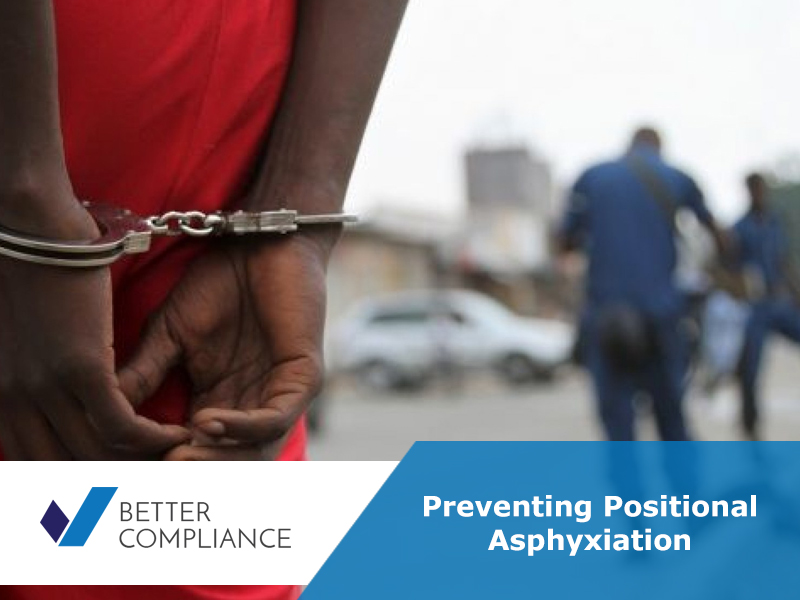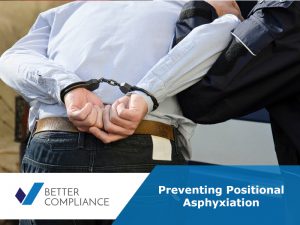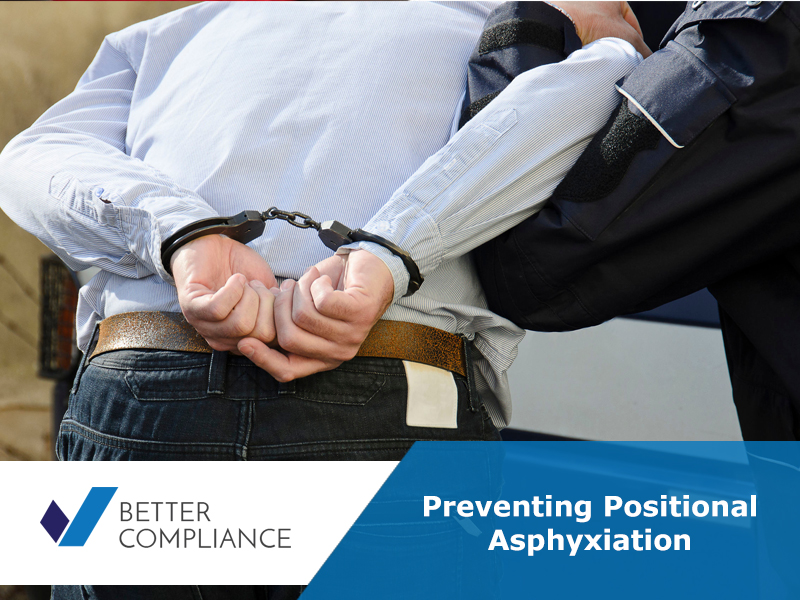 Keep your Guests, Staff & Premises
Keep your Guests, Staff & Premises
Licence Safe
The tragic and unnecessary death of George Floyd in Minneapolis this week raises the serious issue, and consequences, of Positional Asphyxiation.
The purpose of this document is to ensure that managers recognise the heightened risk of positional asphyxia during restraint and are alert to the immediate emergency actions to be taken.
As managers you are ultimately responsible for your teams’ actions. This includes contracted security. You need to be aware of Positional Asphyxia and what you must do to prevent it from occurring.
Introduction
There are techniques of restraint that have been associated with sudden, unexpected deaths. These are people who die suddenly during restraint by security staff, police officers, correction officers and health care staff.
All personnel must be aware of the potential dangers and take every precaution to ensure they adopt safe practice.
Definition
Positional Asphyxia (also known as restraint asphyxia) can be defined as obstruction of breathing because of restraint technique. It occurs when a person is placed in a posture that prevents or impedes the mechanism of normal breathing.
If the person cannot escape from the position, death may occur very rapidly if this is not recognised.
Death can occur from asphyxia or suffocation. Its important note that any body position that interferes with breathing can cause death.
Background
Research has suggested that restraining a person in a face down position is likely to cause greater restriction of breathing than restraining a person face up. Many law enforcement and health personnel are now taught to avoid restraining people face down or to do so only for a very short period of time. You need to follow suit.
Furthermore, research measuring the effect of restraint positions on lung function suggests that restraint which involves bending the restrained person or placing body weight on them, has more effect on their breathing than face down positioning alone
Risk factors which may increase the chance of death include
- Kneeling or otherwise placing weight on the subject particularly on the abdomen
- Prolonged (particularly resisted) restraint
- Prior cardiac or respiratory problems
- A person is intoxicated with alcohol or drugs
- A person is substantially overweight (though thin people cannot breathe either if in wrong position)
- A person is suffering respiratory muscle fatigue (exhaustion)
- There is some form of airway obstruction
- A person is unconscious for whatever other reason
- Other issues in the way the subject is restrained can also increase the risk of death, for example Any type of restraint holds around the subject’s neck
The Downward Spiral
A review of past tragedies reveals a “downward spiral” leading to the adverse outcome that is common to these cases.
- Stage 1 – Development of an incident – the individual exhibits irrational, violent, aggressive behaviour and/or paranoia. The person may be unusually physically active and aroused. The behaviour causes concern and comes to the attention of a Security Guard.
- Stage 2 – Intervention – Attempts at calm rational intervention fail and the decision is made to physically restrain the individual. A struggle ensues in which the person seems to have unusual energy requiring several people to restrain them and place them in a prone position. One or more guards are tempted to sit or lean on the subject to maintain control.
The subject may perceive this hostile and fight even harder in an attempt to get relief.
The person may also be fighting harder because they cannot breathe and what is perceived to be increasing violence may actually be increasing desperation to stay alive.
- Stage 3 – Exhaustion – The continuing panic and desperation to breathe may cause staff to see the person as a continued threat and apply even more force to restrain them. While struggling with security staff the person expends large amounts of energy trying to breathe. The individual becomes exhausted with low blood oxygen and when they are finally unable to struggle any more, it may be too late.
 Recognising the Symptoms and signs
Recognising the Symptoms and signs
The first step in prevention is to recognise the risks. This will not eliminate the need to physically control some persons during violent or dangerous incidents but recognising the signs of danger and taking appropriate preventative action may help to reduce the occurrence of bad outcomes.
Managers should pay close attention to the following:
- A person telling you he/she cannot breathe (it should be noted that a person suffering breathing difficulties may not be able to complain about their crisis)
- Gurgling/gasping sounds indicating blockage of the airway and or with foam or mucus coming from the nose or mouth.
- A person shows any visual sign that they are struggling to breathe
- Lips, hands, face discoloured blue due to lack of oxygen (cyanosis)
- Increasing escalated panic, aggression, and prolonged resistance
- Sudden tranquillity – an active, loud, threatening, violent, abusive person suddenly becoming quiet and tranquil, not moving
- A person who displays a heightened level of aggression during restraint may be a physiological response to fighting for air. Any increased resistance during restraint of a person should be regarded with caution.
- A person presents swelling, redness or blood spots to the face or neck
- A person suffers a loss or a reduced level of consciousness.
Standard Operating Procedure
Security staff must recognise the risk of positional asphyxia occurring in the following circumstances and be prepared to respond to a medical emergency:
When a person is
- Restrained
- Physically ejected
- Left in any position that impedes their ability to breathe normally.
Your team must take the following actions to reduce the risk of positional asphyxia occurring:
- Do not sit or lean or lean on the abdomen ever.
- Once restrained a person should be raised to their feet to a seated or standing position that does not impede the mechanism of normal breathing.
- Avoid prone restraint unless absolutely necessary.
- Care should be taken not to put pressure on the back as breathing can be restricted even if the person is placed in the recovery position.
- Monitoring the person’s condition continually whilst being restrained, as death can occur suddenly and develop beyond the point of viable resuscitation within seconds rather than minutes.
- Whenever possible during team restraint, a ‘Safety Officer’ or ‘First aider’ is to be identified with the responsibility to monitor the health and welfare of the person during restraint.
- Alert police, if attendance, if restraint has been used on the person.
- Identify persons of increased risk.
- Restraint must occur in direct CCTV sight.
- Ideally this action takes place in the identified ’Restraint Area’ which must be covered by CCTV
Staff must take the following emergency actions if positional asphyxia is suspected:
- Call for immediate emergency medical assistance if there is any reason for concern about a person’s condition.
- Remove all methods of restraint.
- Place the person in a position that does not impede their breathing.
- If consciousness is lost, check airway and breathing.
- Commence CPR if necessary; but be aware that the oxygen supply in the blood is most likely exhausted by this stage.
- A full record must be made of events a soon as reasonably practical.
- Notify your senior manager immediately.
BETTER Compliance provides bespoke management training on managing security effectively and safely. Please contact us at [email protected] for more information.

